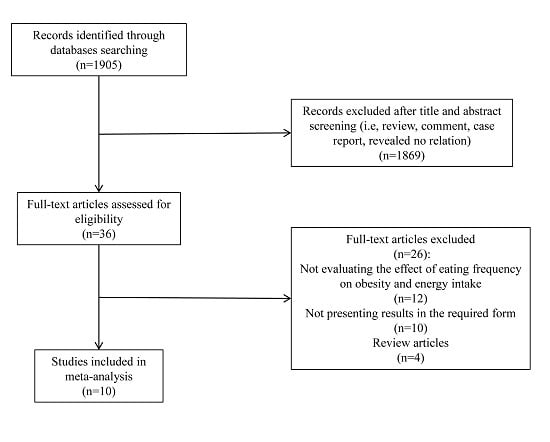Increased Eating Frequency Is Associated with Lower Obesity Risk, But Higher Energy Intake in Adults: A Meta-Analysis
Abstract
:1. Introduction
2. Methods
2.1. Search Strategy
2.2. Inclusion Criteria
2.3. Data Extraction
2.4. Quality Assessment
2.5. Statistical Analysis
3. Results
3.1. Study Selection
3.2. Study Characteristics
3.3. EF and Obesity Risk in Adults
3.4. EF and Energy Intake in Adults
3.5. Sensitivity Analysis and Subgroup Analysis
4. Discussion
5. Conclusions
Acknowledgments
Author Contributions
Conflicts of Interest
Abbreviations
| EF | eating frequency |
| EI | energy intake |
| EE | energy expenditure |
| BMI | body mass index |
| SES | social economic status |
| Med | Mediterranean |
| PA | physical activity |
| OR | odd ratios |
| CIs | confidence intervals |
| SEs | standard errors |
References
- WHO. Fact Sheet of Obesity and Overweight; WHO: Geneva, Switzerland, 2015. [Google Scholar]
- Chamieh, M.C.; Moore, H.J.; Summerbell, C.; Tamim, H.; Sibai, A.M.; Hwalla, N. Diet, physical activity and socio-economic disparities of obesity in lebanese adults: Findings from a national study. BMC Public Health 2015, 15, 279. [Google Scholar] [CrossRef] [PubMed]
- Broskey, N.T.; Johannsen, D.; Redman, L. Regulation of body weight in humans. In Endotext; De Groot, L.J., Beck-Peccoz, P., Chrousos, G., Dungan, K., Grossman, A., Hershman, J.M., Koch, C., McLachlan, R., New, M., Rebar, R., et al., Eds.; MDText.com, Inc.: South Dartmouth, MA, USA, 2000. [Google Scholar]
- Tracy, A.L.; Hazeltine, G.; Wee, C.J.M.; Benoit, S.C. Regulation of energy intake in humans. In Endotext; De Groot, L.J., Beck-Peccoz, P., Chrousos, G., Dungan, K., Grossman, A., Hershman, J.M., Koch, C., McLachlan, R., New, M., Rebar, R., et al., Eds.; MDText.com, Inc.: South Dartmouth, MA, USA, 2000. [Google Scholar]
- Bray, G.A. Prevention of obesity. In Endotext; De Groot, L.J., Beck-Peccoz, P., Chrousos, G., Dungan, K., Grossman, A., Hershman, J.M., Koch, C., McLachlan, R., New, M., Rebar, R., et al., Eds.; MDText.com, Inc.: South Dartmouth, MA, USA, 2000. [Google Scholar]
- Aljuraiban, G.S.; Chan, Q.; Griep, L.M.O.; Brown, I.J.; Daviglus, M.L.; Stamler, J.; Van Horn, L.; Elliott, P.; Frost, G.S.; Group, I.R. The impact of eating frequency and time of intake on nutrient quality and body mass index: The intermap study, a population-based study. J. Acad. Nutr. Diet. 2015, 115, 528–536. [Google Scholar] [CrossRef] [PubMed]
- Atalayer, D.; Rowland, N.E. Effects of meal frequency and snacking on food demand in mice. Appetite 2012, 58, 117–123. [Google Scholar] [CrossRef] [PubMed]
- House, B.T.; Shearrer, G.E.; Miller, S.J.; Pasch, K.E.; Goran, M.I.; Davis, J.N. Increased eating frequency linked to decreased obesity and improved metabolic outcomes. Int. J. Obes. 2015, 39, 136–141. [Google Scholar] [CrossRef] [PubMed]
- Speechly, D.P.; Buffenstein, R. Greater appetite control associated with an increased frequency of eating in lean males. Appetite 1999, 33, 285–297. [Google Scholar] [CrossRef] [PubMed]
- Leidy, H.J.; Campbell, W.W. The effect of eating frequency on appetite control and food intake: Brief synopsis of controlled feeding studies. J. Nutr. 2011, 141, 154–157. [Google Scholar] [CrossRef] [PubMed]
- Hill, J.O.; Anderson, J.C.; Lin, D.; Yakubu, F. Effects of meal frequency on energy utilization in rats. Am. J. Physiol. 1988, 255, R616–R621. [Google Scholar] [PubMed]
- Verbaeys, I.; Tolle, V.; Swennen, Q.; Zizzari, P.; Buyse, J.; Epelbaum, J.; Cokelaere, M. Scheduled feeding results in adipogenesis and increased acylated ghrelin. Am. J. Physiol. Endocrinol. Metab. 2011, 300, E1103–E1111. [Google Scholar] [CrossRef] [PubMed]
- Fabry, P.; Hejda, S.; Cerny, K.; Osancova, K.; Pechar, J. Effect of meal frequency in schoolchildren—Changes in weight-height proportion and skinfold thickness. Am. J. Clin. Nutr. 1966, 18, 358–361. [Google Scholar] [PubMed]
- Drummond, S.E.; Crombie, N.E.; Cursiter, M.C.; Kirk, T.R. Evidence that eating frequency is inversely related to body weight status in male, but not female, non-obese adults reporting valid dietary intakes. Int. J. Obes. Relat. Metab. Disord. 1998, 22, 105–112. [Google Scholar] [CrossRef] [PubMed]
- Yannakoulia, M.; Melistas, L.; Solomou, E.; Yiannakouris, N. Association of eating frequency with body fatness in pre- and postmenopausal women. Obesity 2007, 15, 100–106. [Google Scholar] [CrossRef] [PubMed]
- Fabry, P.; Hejl, Z.; Fodor, J.; Braun, T.; Zvolankova, K. The frequency of meals: Its relation to overweight, hypercholesterolaemia, and decreased glucose-tolerance. Lancet 1964, 2, 614–615. [Google Scholar] [CrossRef]
- Kaisari, P.; Yannakoulia, M.; Panagiotakos, D.B. Eating frequency and overweight and obesity in children and adolescents: A meta-analysis. Pediatrics 2013, 131, 958–967. [Google Scholar] [CrossRef] [PubMed]
- Schoenfeld, B.J.; Aragon, A.A.; Krieger, J.W. Effects of meal frequency on weight loss and body composition: A meta-analysis. Nutr. Rev. 2015, 73, 69–82. [Google Scholar] [CrossRef] [PubMed]
- Kant, A.K.; Schatzkin, A.; Graubard, B.I.; Ballard-Barbash, R. Frequency of eating occasions and weight change in the NHANES I epidemiologic follow-up study. Int. J. Obes. Relat. Metab. Disord. 1995, 19, 468–474. [Google Scholar] [PubMed]
- Summerbell, C.D.; Moody, R.C.; Shanks, J.; Stock, M.J.; Geissler, C. Relationship between feeding pattern and body mass index in 220 free-living people in four age groups. Eur. J. Clin. Nutr. 1996, 50, 513–519. [Google Scholar] [PubMed]
- Huang, T.T.; Howarth, N.C.; Lin, B.H.; Roberts, S.B.; McCrory, M.A. Energy intake and meal portions: Associations with BMI percentile in U.S. Children. Obes. Res. 2004, 12, 1875–1885. [Google Scholar] [CrossRef] [PubMed]
- Huang, T.T.; Roberts, S.B.; Howarth, N.C.; McCrory, M.A. Effect of screening out implausible energy intake reports on relationships between diet and BMI. Obes. Res. 2005, 13, 1205–1217. [Google Scholar] [CrossRef] [PubMed]
- Van der Heijden, A.A.; Hu, F.B.; Rimm, E.B.; van Dam, R.M. A prospective study of breakfast consumption and weight gain among U.S. Men. Obesity 2007, 15, 2463–2469. [Google Scholar] [CrossRef] [PubMed]
- Duval, K.; Strychar, I.; Cyr, M.J.; Prud’homme, D.; Rabasa-Lhoret, R.; Doucet, E. Physical activity is a confounding factor of the relation between eating frequency and body composition. Am. J. Clin. Nutr. 2008, 88, 1200–1205. [Google Scholar] [PubMed]
- Liberati, A.; Altman, D.G.; Tetzlaff, J.; Mulrow, C.; Gotzsche, P.C.; Ioannidis, J.P.; Clarke, M.; Devereaux, P.J.; Kleijnen, J.; Moher, D. The prisma statement for reporting systematic reviews and meta-analyses of studies that evaluate healthcare interventions: Explanation and elaboration. BMJ 2009, 339, e1000100. [Google Scholar] [CrossRef] [PubMed]
- Rostom, A.; Dubé, C.; Cranney, A.; Saloojee, N.; Sy, R.; Garritty, C.; Sampson, M.; Zhang, L.; Yazdi, F.; Mamaladze, V.; et al. Appendix D. Quality Assessment Forms; Evidence Reports/Technology Assessments, No. 104; Agency for Healthcare Research and Quality (US): Rockville, MD, USA, 2004.
- Deeks, J.J.; Higgins, J.P.; Altman, D.G. Analysing and presenting results. In Cochrane Handbook for Systematic Reviews of Interventions; Higgins, J.P., Green, S.E., Eds.; Wiley-Blackwell: Hoboken, NJ, USA, 2005. [Google Scholar]
- Higgins, J.P.; Thompson, S.G.; Deeks, J.J.; Altman, D.G. Measuring inconsistency in meta-analyses. BMJ 2003, 327, 557–560. [Google Scholar] [CrossRef] [PubMed]
- DerSimonian, R.; Laird, N. Meta-analysis in clinical trials. Control. Clin. Trials 1986, 7, 177–188. [Google Scholar] [CrossRef]
- Mantel, N.; Haenszel, W. Statistical aspects of the analysis of data from retrospective studies of disease. J. Natl. Cancer Inst. 1959, 22, 719–748. [Google Scholar] [PubMed]
- Higgins, J.P.; Thompson, S.G. Quantifying heterogeneity in a meta-analysis. Stat. Med. 2002, 21, 1539–1558. [Google Scholar] [CrossRef] [PubMed]
- Begg, C.B.; Mazumdar, M. Operating characteristics of a rank correlation test for publication bias. Biometrics 1994, 50, 1088–1101. [Google Scholar] [CrossRef] [PubMed]
- Egger, M.; Davey Smith, G.; Schneider, M.; Minder, C. Bias in meta-analysis detected by a simple, graphical test. BMJ 1997, 315, 629–634. [Google Scholar] [CrossRef] [PubMed]
- Holmback, I.; Ericson, U.; Gullberg, B.; Wirfalt, E. A high eating frequency is associated with an overall healthy lifestyle in middle-aged men and women and reduced likelihood of general and central obesity in men. Br. J. Nutr. 2010, 104, 1065–1073. [Google Scholar] [CrossRef] [PubMed]
- Marin-Guerrero, A.C.; Gutierrez-Fisac, J.L.; Guallar-Castillon, P.; Banegas, J.R.; Rodriguez-Artalejo, F. Eating behaviours and obesity in the adult population of spain. Br. J. Nutr. 2008, 100, 1142–1148. [Google Scholar] [CrossRef] [PubMed]
- Titan, S.M.; Bingham, S.; Welch, A.; Luben, R.; Oakes, S.; Day, N.; Khaw, K.T. Frequency of eating and concentrations of serum cholesterol in the norfolk population of the European prospective investigation into cancer (EPIC-Norfolk): Cross sectional study. BMJ 2001, 323. [Google Scholar] [CrossRef]
- Ruidavets, J.B.; Bongard, V.; Bataille, V.; Gourdy, P.; Ferrieres, J. Eating frequency and body fatness in middle-aged men. Int. J. Obes. 2002, 26, 1476–1483. [Google Scholar] [CrossRef] [PubMed]
- Karatzi, K.; Yannakoulia, M.; Psaltopoulou, T.; Voidonikola, P.; Kollias, G.; Sergentanis, T.N.; Retsas, T.; Alevizaki, M.; Papamichael, C.; Stamatelopoulos, K. Meal patterns in healthy adults: Inverse association of eating frequency with subclinical atherosclerosis indexes. Clin. Nutr. 2015, 34, 302–308. [Google Scholar] [CrossRef] [PubMed]
- Mills, J.P.; Perry, C.D.; Reicks, M. Eating frequency is associated with energy intake but not obesity in midlife women. Obesity 2011, 19, 552–559. [Google Scholar] [CrossRef] [PubMed]
- Ma, Y. Association between eating patterns and obesity in a free-living US adult population. Am. J. Epidemiol. 2003, 158, 85–92. [Google Scholar] [CrossRef] [PubMed]
- Edelstein, S.L.; Barrett-Connor, E.L.; Wingard, D.L.; Cohn, B.A. Increased meal frequency associated with decreased cholesterol concentrations; Rancho Bernardo, CA, 1984–1987. Am. J. Clin. Nutr. 1992, 55, 664–669. [Google Scholar] [PubMed]
- Berg, C.; Lappas, G.; Wolk, A.; Strandhagen, E.; Toren, K.; Rosengren, A.; Thelle, D.; Lissner, L. Eating patterns and portion size associated with obesity in a swedish population. Appetite 2009, 52, 21–26. [Google Scholar] [CrossRef] [PubMed]
- Fung, T.T.; Pan, A.; Hou, T.; Chiuve, S.E.; Tobias, D.K.; Mozaffarian, D.; Willett, W.C.; Hu, F.B. Long-term change in diet quality is associated with body weight change in men and women. J. Nutr. 2015, 145, 1850–1856. [Google Scholar] [CrossRef] [PubMed]
- Collins, C.E.; Young, A.F.; Hodge, A. Diet quality is associated with higher nutrient intake and self-rated health in mid-aged women. J. Am. Coll. Nutr. 2008, 27, 146–157. [Google Scholar] [CrossRef] [PubMed]
- De Oliveira, E.P.; Diegoli, A.C.M.; Corrente, J.E.; McLellan, K.C.P.; Burini, R.C. The increase of dairy intake is the main dietary factor associated with reduction of body weight in overweight adults after lifestyle change program. Nutr. Hosp. 2015, 32, 1042–1049. [Google Scholar] [CrossRef] [PubMed]
- Hutchesson, M.J.; Collins, C.E.; Morgan, P.J.; Watson, J.F.; Guest, M.; Callister, R. Changes to dietary intake during a 12-week commercial web-based weight loss program: A randomized controlled trial. Eur. J. Clin. Nutr. 2014, 68, 64–70. [Google Scholar] [CrossRef] [PubMed]
- Collins, C.E.; Morgan, P.J.; Jones, P.; Fletcher, K.; Martin, J.; Aguiar, E.J.; Lucas, A.; Neve, M.J.; Callister, R. A 12-week commercial web-based weight-loss program for overweight and obese adults: Randomized controlled trial comparing basic versus enhanced features. J. Med. Internet Res. 2012, 14, e57. [Google Scholar] [CrossRef] [PubMed]
- Kennedy, E.T.; Ohls, J.; Carlson, S.; Fleming, K. The healthy eating index. J. Am. Diet. Assoc. 1995, 95, 1103–1108. [Google Scholar] [CrossRef]
- Chapelot, D.; Marmonier, C.; Aubert, R.; Allegre, C.; Gausseres, N.; Fantino, M.; Louis-Sylvestre, J. Consequence of omitting or adding a meal in man on body composition, food intake, and metabolism. Obesity 2006, 14, 215–227. [Google Scholar] [CrossRef] [PubMed]
- Louis-Sylvestre, J.; Lluch, A.; Neant, F.; Blundell, J.E. Highlighting the positive impact of increasing feeding frequency on metabolism and weight management. Forum Nutr. 2003, 56, 126–128. [Google Scholar] [PubMed]
- Jenkins, D.J.; Wolever, T.M.; Vuksan, V.; Brighenti, F.; Cunnane, S.C.; Rao, A.V.; Jenkins, A.L.; Buckley, G.; Patten, R.; Singer, W.; et al. Nibbling versus gorging: Metabolic advantages of increased meal frequency. N. Engl. J. Med. 1989, 321, 929–934. [Google Scholar] [CrossRef] [PubMed]
- Jenkins, D.J.; Jenkins, A.L.; Wolever, T.M.; Vuksan, V.; Rao, A.V.; Thompson, L.U.; Josse, R.G. Low glycemic index: Lente carbohydrates and physiological effects of altered food frequency. Am. J. Clin. Nutr. 1994, 59, 706s–709s. [Google Scholar] [PubMed]
- Bellisle, F.; McDevitt, R.; Prentice, A.M. Meal frequency and energy balance. Br. J. Nutr. 1997, 77 (Suppl. S1), S57–S70. [Google Scholar] [CrossRef] [PubMed]
- Howarth, N.C.; Huang, T.T.; Roberts, S.B.; Lin, B.H.; McCrory, M.A. Eating patterns and dietary composition in relation to BMI in younger and older adults. Int. J. Obes. 2007, 31, 675–684. [Google Scholar] [CrossRef] [PubMed]
- Smith, K.J.; Blizzard, L.; McNaughton, S.A.; Gall, S.L.; Dwyer, T.; Venn, A.J. Daily eating frequency and cardiometabolic risk factors in young australian adults: Cross-sectional analyses. Br. J. Nutr. 2012, 108, 1086–1094. [Google Scholar] [CrossRef] [PubMed]
- Speechly, D.P.; Rogers, G.G.; Buffenstein, R. Acute appetite reduction associated with an increased frequency of eating in obese males. Int. J. Obes. Relat. Metab. Disord. 1999, 23, 1151–1159. [Google Scholar] [CrossRef] [PubMed]
- Cameron, J.D.; Cyr, M.J.; Doucet, E. Increased meal frequency does not promote greater weight loss in subjects who were prescribed an 8-week equi-energetic energy-restricted diet. Br. J. Nutr. 2010, 103, 1098–1101. [Google Scholar] [CrossRef] [PubMed]
- Fisher, J.O.; Arreola, A.; Birch, L.L.; Rolls, B.J. Portion size effects on daily energy intake in low-income Hispanic and African American children and their mothers. Am. J. Clin. Nutr. 2007, 86, 1709–1716. [Google Scholar] [PubMed]
- Kral, T.V. Effects on hunger and satiety, perceived portion size and pleasantness of taste of varying the portion size of foods: A brief review of selected studies. Appetite 2006, 46, 103–105. [Google Scholar] [CrossRef] [PubMed]
- Young, L.R.; Nestle, M. The contribution of expanding portion sizes to the us obesity epidemic. Am. J. Public Health 2002, 92, 246–249. [Google Scholar] [CrossRef] [PubMed]
- Mattes, R. Energy intake and obesity: Ingestive frequency outweighs portion size. Physiol. Behav. 2014, 134, 110–118. [Google Scholar] [CrossRef] [PubMed]
- Wang, Y.; Beydoun, M.A.; Li, J.; Liu, Y.; Moreno, L.A. Do children and their parents eat a similar diet? Resemblance in child and parental dietary intake: Systematic review and meta-analysis. J. Epidemiol. Community Health 2011, 65, 177–189. [Google Scholar] [CrossRef] [PubMed]
- Oltersdorf, U.; Schlettwein-gsell, D.; Winkler, G. Assessing eating patterns-an emerging research topic in nutritional sciences: Introduction to the symposium. Appetite 1999, 32, 1–7. [Google Scholar] [CrossRef] [PubMed]
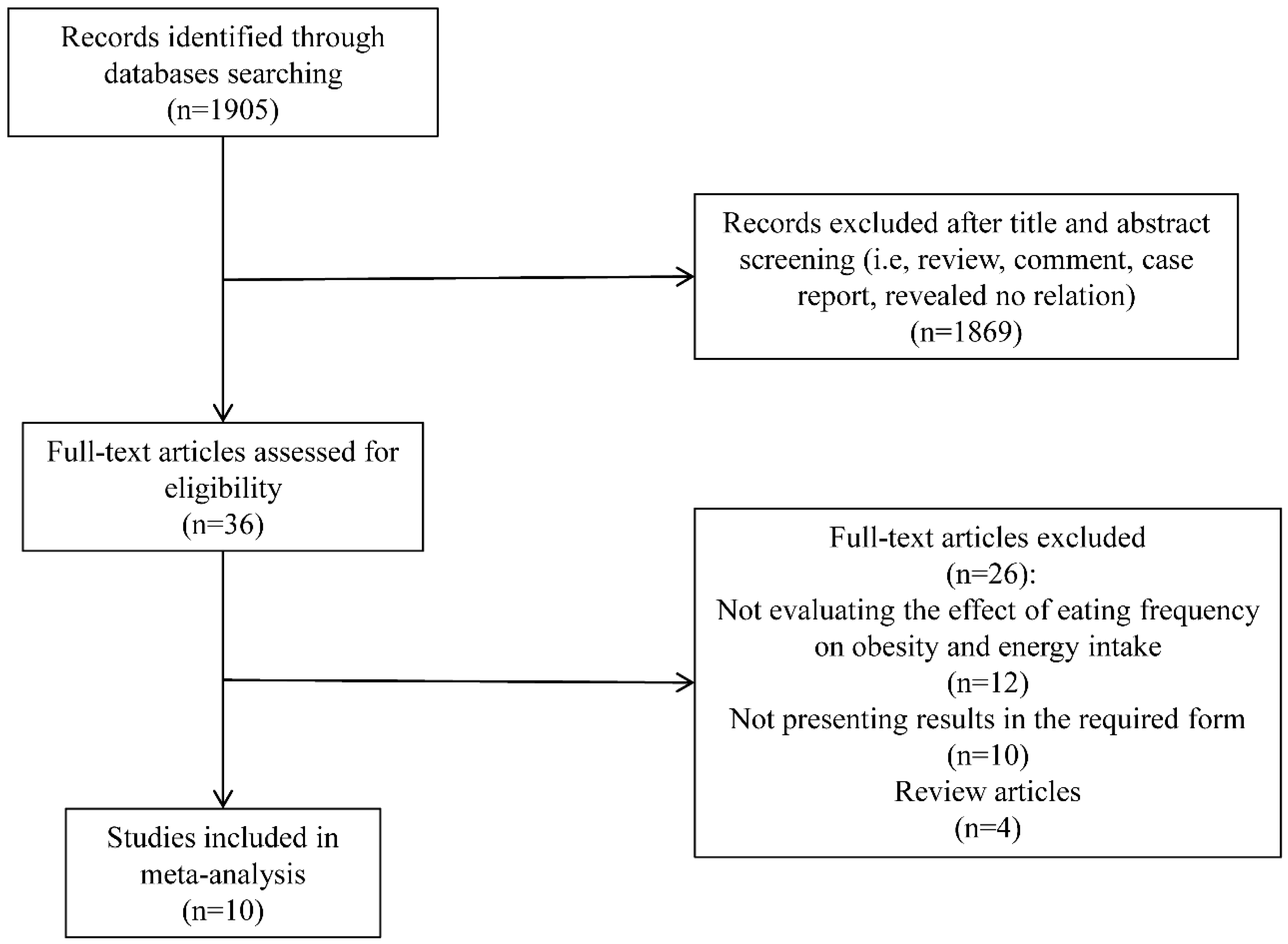
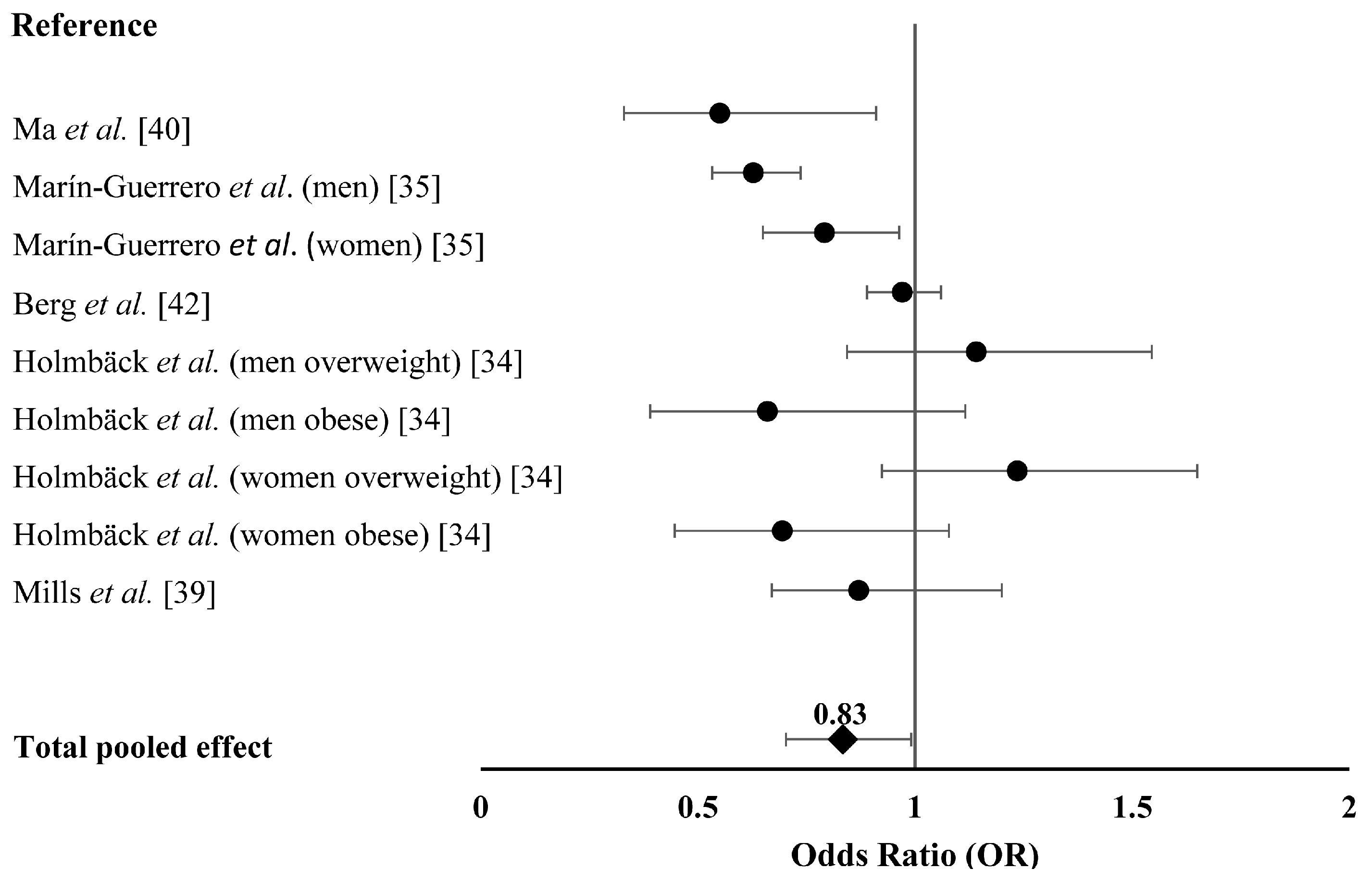
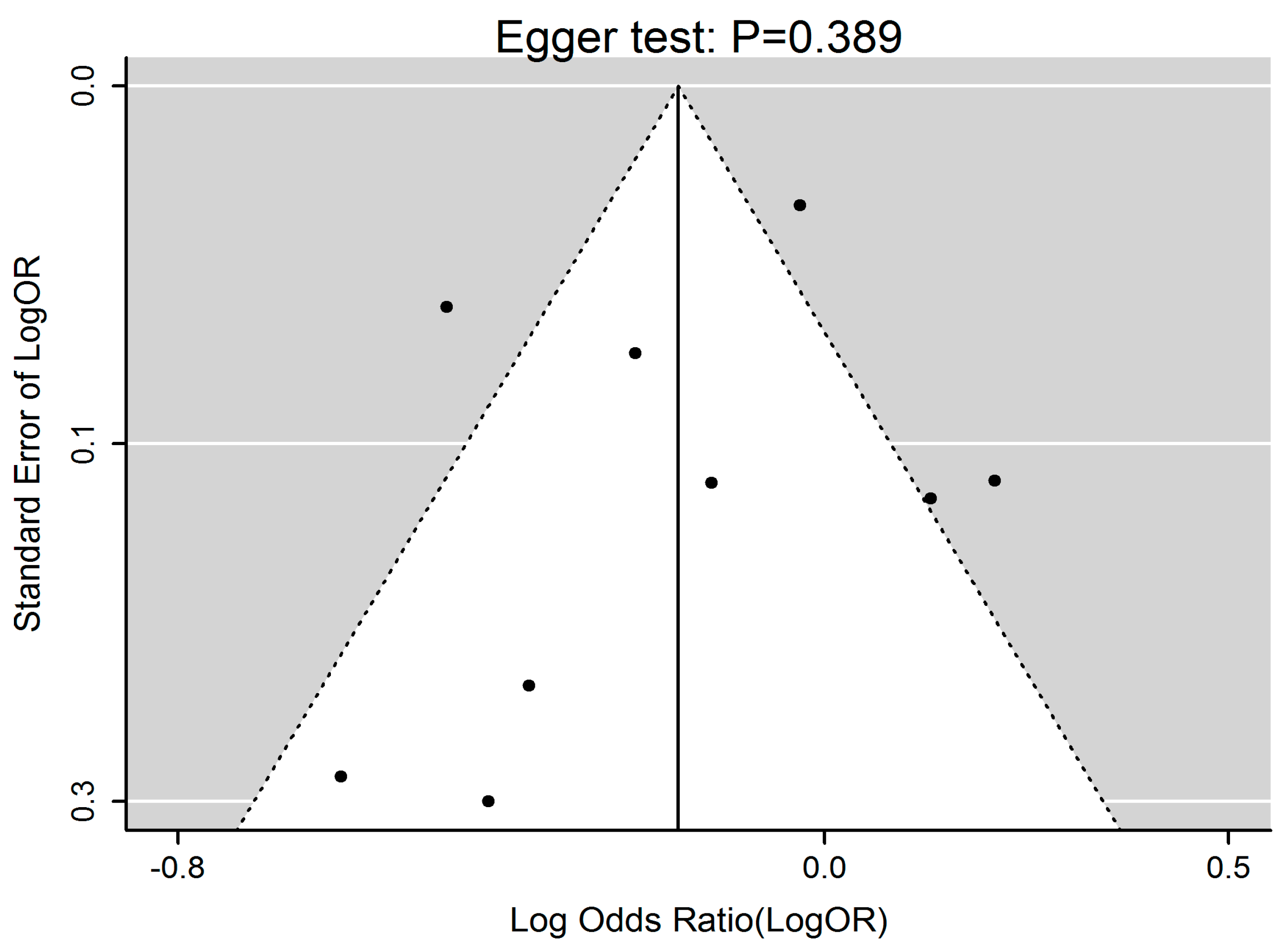
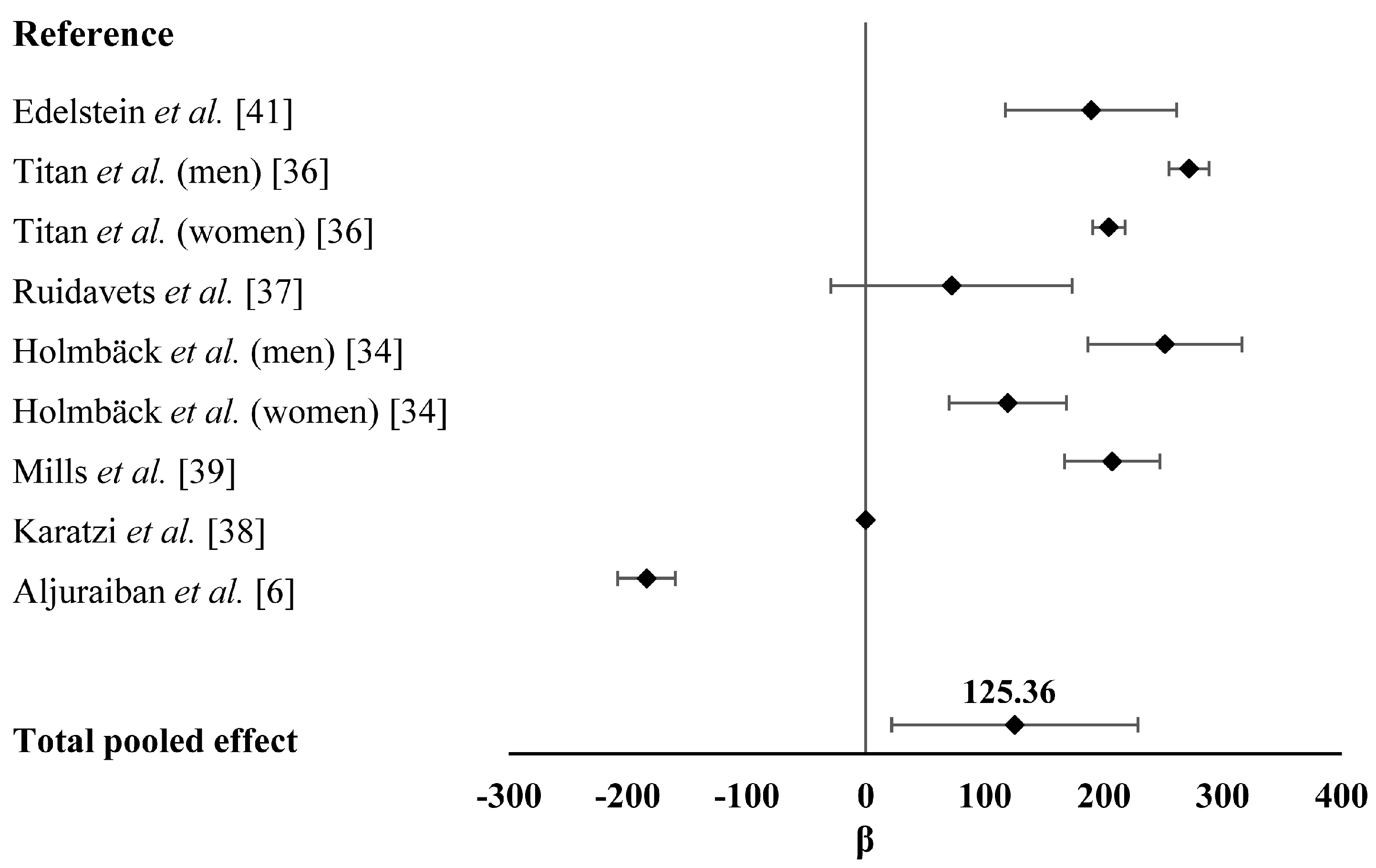
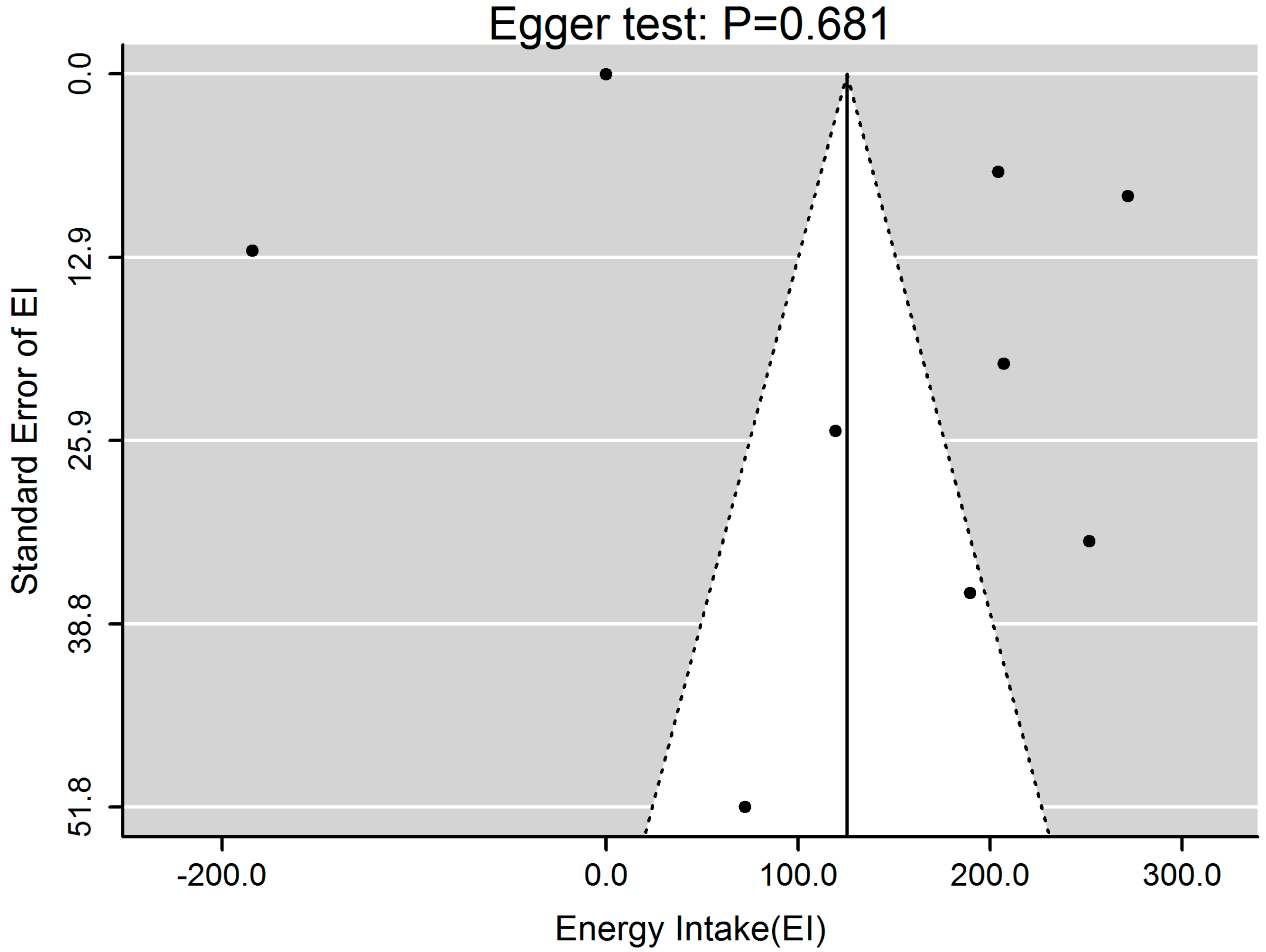
| Study [Ref.] | Year | Country | Sample, n | EF (No. of Times per Day) | Adjustment Factors | Findings | ||
|---|---|---|---|---|---|---|---|---|
| Male | Female | Age | ||||||
| Edelstein et al. [41] | 1992 | USA | 2034 | 50–89 | 1–2; 3; ≥4 | 2 | BMI did not differ significantly by EF. | |
| Titan et al. [36] | 2001 | UK | 6890 | 7776 | 45–75 | 1–2; 3; 4; 5; ≥6 | 1,5–12 | BMI was negatively associated with EF in men but not in women. |
| Ruidavets et al. [37] | 2002 | France | 242 | 0 | 45–64 | 1–2; 3; 4; ≥5 | 1,4 | Increase of EF is associated with lower body fatness. |
| Ma et al. [40] | 2003 | USA | 251 | 248 | 20–70 | ≤3; ≥4 | 1,2,4,7,13 | A greater number of eating episodes each day was associated with a lower risk of obesity. |
| Marín-Guerrero et al. [35] | 2008 | Spain | 16,929 | 18,045 | 25–64 | 1; 2; 3–4 | 1,3,6,7,9,14,15,20 | Obesity was more prevalent in those having only two meals per day than in those having three or four meals in men and women. |
| Berg et al. [42] | 2009 | Sweden | 3591 | 25–77 | 1–8 | 1,2,6,7 | There was no significant association between obesity and EF due to methodological problems. | |
| Holmbäck et al. [34] | 2010 | Sweden | 892 | 1024 | 45–72 | ≤3; 4–5; ≥6 | 1,4,6,7,9,11,13,16,17 | Men with a low EF showed an increased risk of general and central obesity and results for women showed similar but non-significant tendencies. |
| Mills et al. [39] | 2011 | USA | 0 | 1099 | 40–60 | 1–3; 4; 5; 6; ≥7 | 1,3,4,13,16,18–21 | EF was not associated with overweight/obesity, but it was associated with energy intake. |
| Karatzi et al. [38] | 2014 | Greece | 62 | 102 | 46.8 ± 9.3 | continuous | 1,11–13,22,23 | EF was inversely associated with BMI. |
| Aljuraiban et al. [6] | 2015 | USA & UK | 1232 | 1153 | 40–59 | <4; 4–5; 5–6; ≥6 | 1,2,6,7,13,24,25 | A larger number of small meals may be associated with improved diet quality and lower BMI. |
| Study [Ref.] | Year | EF | Original OR | Combined OR | 95% CI |
|---|---|---|---|---|---|
| Ma et al. [40] | 2003 | continuous | 0.55 | 0.55 | 0.33–0.91 |
| Marín-Guerrero et al. [35] (Men) | 2008 | 3 or 4 | 0.7 | 0.63 | 0.47–1.06 |
| 2 | 0.61 | ||||
| Marín-Guerrero et al. [35] (Women) | 2008 | 3 or 4 | 0.9 | 0.79 | 0.56–1.41 |
| 2 | 0.77 | ||||
| Berg et al. [42] | 2009 | continuous | 0.97 | 0.97 | 0.89–1.06 |
| Holmbäck et al. [34] (Men overweight) | 2010 | ≥6 | 1.06 | 1.14 | 0.62–1.85 |
| 4~5 | 1.17 | ||||
| Holmbäck et al. [34] (Men obese) | 2010 | ≥6 | 0.41 | 0.66 | 0.17–0.98 |
| 4~5 | 0.87 | ||||
| Holmbäck et al. [34] (Women overweight) | 2010 | ≥6 | 1.32 | 1.24 | 0.64–2.70 |
| 4~5 | 1.22 | ||||
| Holmbäck et al. [34] (Women obese) | 2010 | ≥6 | 0.39 | 0.69 | 0.14–1.08 |
| 4~5 | 0.79 | ||||
| Mills et al. [39] | 2011 | continuous | 0.87 | 0.87 | 0.49–1.30 |
| Study [Ref.] | Year | EF | EI (kcal) | β | SE |
|---|---|---|---|---|---|
| Edelstein et al. [41] | 1992 | 1–2 | 1962 ± 45.4 | 189.46 | 36.65 |
| 3 | 1792 ± 26.2 | ||||
| 4 | 1658 ± 63 | ||||
| Titan et al. [36] (Men) | 2001 | 1–2 | 1965.8 ± 621.9 | 271.82 | 8.61 |
| 3 | 2027 ± 552.5 | ||||
| 4 | 2232.8 ± 616.4 | ||||
| 5 | 2383.4 ± 641.5 | ||||
| ≥6 | 2542.8 ± 692.9 | ||||
| Titan et al. [36] (Women) | 2001 | 1–2 | 1810.9 ± 571.2 | 204.25 | 6.92 |
| 3 | 1786.3 ± 482.1 | ||||
| 4 | 1925 ± 528.2 | ||||
| 5 | 2054 ± 531.1 | ||||
| ≥6 | 2213.7 ± 602.3 | ||||
| Ruidavets et al. [37] | 2002 | 1–2 | 2306.4 ± 645.3 | 72.23 | 51.75 |
| 3 | 2380.5 ± 597.5 | ||||
| 4 | 2414 ± 645.3 | ||||
| ≥5 | 2485.7 ± 621.4 | ||||
| Holmbäck et al. [34] (Men) | 2010 | ≤3 | 2557.4 | 251.52 | 32.99 |
| 4–5 | 2724.7 | ||||
| ≥6 | 2963.7 | ||||
| Holmbäck et al. [34] (Women) | 2010 | ≤3 | 1959.8 | 119.50 | 25.19 |
| 4–5 | 2103.3 | ||||
| ≥6 | 2175 | ||||
| Mills et al. [39] | 2011 | ≤3 | 1864 ± 583 | 207.01 | 20.47 |
| 4 | 2025 ± 627 | ||||
| 5 | 2158 ± 765 | ||||
| 6 | 2235 ± 630 | ||||
| ≥7 | 2348 ± 730 | ||||
| Karatzi et al. [38] | 2014 | continuous | 0.03 | 0.03 | 0.01 |
| Aljuraiban et al. [6] | 2015 | ≤4 | 2472 | −184.23 | 12.49 |
| 4–5 | 2402 | ||||
| 5–6 | 2294 | ||||
| ≥6 | 2129 |
| Exposure | Subgroup | Number of Studies | Q | p-Value | I2 (%) | OR (95% CI) |
|---|---|---|---|---|---|---|
| Gender | male | 3 | 11.75 | 0.003 | 82.99% | 0.78 (0.51,1.20) |
| female | 4 | 7.48 | 0.058 | 59.92% | 0.89 (0.71,1.12) | |
| mixed | 2 | 4.66 | 0.031 | 78.58% | 0.77 (0.45,1.33) | |
| Age | >20 | 4 | 25.56 | <0.0001 | 88.27% | 0.75 (0.57,0.97) |
| >40 | 5 | 8.58 | 0.072 | 53.39% | 0.94 (0.74,1.18) | |
| Country | USA | 2 | 2.36 | 0.124 | 57.65% | 0.73 (0.47,1.13) |
| Med | 7 | 32.98 | <0.0001 | 81.81% | 0.86 (0.71,1.05) | |
| Education | unadjusted | 3 | 22.53 | <0.0001 | 91.12% | 0.79 (0.59,1.04) |
| adjusted | 6 | 13.08 | 0.023 | 61.77% | 0.87 (0.68,1.11) | |
| Smoking | unadjusted | 2 | 2.36 | 0.124 | 57.65% | 0.73 (0.47,1.13) |
| adjusted | 7 | 32.98 | <0.0001 | 81.81% | 0.86 (0.71,1.05) | |
| Alcohol | unadjusted | 3 | 5.02 | 0.081 | 60.20% | 0.85 (0.67,1.09) |
| adjusted | 6 | 23.34 | 0.0003 | 78.58% | 0.83 (0.65,1.07) | |
| SES | unadjusted | 4 | 25.57 | <0.0001 | 88.27% | 0.75 (0.57,0.97) |
| adjusted | 5 | 8.58 | 0.072 | 53.39% | 0.94 (0.74,1.18) | |
| Fiber Intake | unadjusted | 5 | 25.57 | <0.0001 | 84.36% | 0.77 (0.62,0.96) |
| adjusted | 4 | 7.77 | 0.051 | 61.40% | 0.95 (0.70,1.28) | |
| EF definition | 1 | 6 | 8.59 | 0.13 | 41.76% | 0.96 (0.83,1.11) |
| 2 | 2 | 3.22 | 0.0726 | 68.97% | 0.7 (0.56,0.88) | |
| 3 | 1 | 0 | 1 | 0.55 (0.33,0.91) | ||
| Diet Assessment | self-report | 7 | 32.98 | <0.0001 | 81.81% | 0.86 (0.71,1.13) |
| food records | 1 | 0 | 1 | 0.87 (0.65,1.16) | ||
| dietary recalls | 1 | 0 | 1 | 0.55 (0.33,0.91) | ||
| Reference Group | EF = 1 | 2 | 3.22 | 0.0726 | 68.97% | 0.7 (0.56,0.88) |
| EF = 3 | 4 | 7.77 | 0.051 | 61.4% | 0.95 (0.7,1.28) | |
| EF was continuous | 3 | 5.03 | 0.0811 | 60.2% | 0.85 (0.67,1.09) | |
| Total | 9 | 36.34 | <0.0001 | 77.98% | 0.83(0.70,0.99) | |
| Exposure | Subgroup | Number of Studies | Q | p-Value | I2 (%) | β (95% CI) |
|---|---|---|---|---|---|---|
| Gender | male | 3 | 14.66 | 0.001 | 86.36% | 211.64 (121.28,301.99) |
| female | 3 | 10.69 | 0.005 | 81.29% | 181.47 (136.54,226.39) | |
| mixed | 3 | 244.50 | <0.0001 | 99.18% | −2.39 (−151.72,146.94) | |
| Education | unadjusted | 5 | 2112.69 | <0.0001 | 99.81% | 95.52 (−44.97,236.01) |
| adjusted | 4 | 16.54 | 0.001 | 81.86% | 168.69 (99.90,237.48) | |
| Obesity | unadjusted | 7 | 429.35 | <0.0001 | 98.60% | 91.44 (−7.71,190.59) |
| adjusted | 2 | 37.43 | <0.0001 | 97.33% | 237.84 (171.63,304.05) | |
| Smoking | unadjusted | 4 | 130.94 | <0.0001 | 97.71% | 116.86 (−19.31,253.03) |
| adjusted | 5 | 978.60 | <0.0001 | 99.59% | 132.10 (−32.41,296.61) | |
| Alcohol | unadjusted | 5 | 348.72 | <0.0001 | 98.85% | 54.18 (−64.21,172.57) |
| adjusted | 4 | 56.66 | <0.0001 | 94.71% | 213.13 (158.69,267.56) | |
| PA | unadjusted | 3 | 28.67 | <0.0001 | 93.02% | 84.44 (−45.45,214.33) |
| adjusted | 6 | 982.47 | <0.0001 | 99.49% | 144.53 (1.66,287.41) | |
| SES | unadjusted | 5 | 2114.63 | <0.0001 | 99.76% | 91.91 (−36.71,220.54) |
| adjusted | 3 | 11.96 | 0.003 | 83.28% | 190.89 (119.52,262.27) | |
| EF definition | 1 | 5 | 51.52 | <0.0001 | 93.05% | 212.11 (166.56,257.66) |
| 2 | 2 | 217.64 | <0.0001 | 99.54% | −91.68 (−272.25,88.89) | |
| 3 | 1 | 0 | 1 | 189.46 (117.63,261.29) | ||
| 4 | 1 | 0 | 1 | 72.23 (−29.2,173.66) | ||
| Diet Assessment | self-report | 5 | 57.67 | 93.06% | 209.42 (160.63,258.21) | |
| food records | 3 | 104.19 | 98.08% | 93.13 (−64.79,251.05) | ||
| dietary recalls | 1 | 0 | 1 | −184.23 (−208.71,−159.75) | ||
| Reference Group | EF = 1–2 | 3 | 38.67 | <0.0001 | 94.87% | 226.28 (170.14,282.43) |
| EF = 3 | 3 | 13.10 | 0.0014 | 84.74% | 151.58 (49.92,253.23) | |
| EF = 4 | 2 | 266.31 | <0.0001 | 99.62% | 11.06 (−372.35,394.46) | |
| EF was continuous | 1 | 0 | 1 | |||
| Total | 9 | 2297.53 | <0.0001 | 99.65% | 125.36(21.76,228.97) | |
© 2016 by the authors; licensee MDPI, Basel, Switzerland. This article is an open access article distributed under the terms and conditions of the Creative Commons Attribution (CC-BY) license (http://creativecommons.org/licenses/by/4.0/).
Share and Cite
Wang, Y.-Q.; Zhang, Y.-Q.; Zhang, F.; Zhang, Y.-W.; Li, R.; Chen, G.-X. Increased Eating Frequency Is Associated with Lower Obesity Risk, But Higher Energy Intake in Adults: A Meta-Analysis. Int. J. Environ. Res. Public Health 2016, 13, 603. https://doi.org/10.3390/ijerph13060603
Wang Y-Q, Zhang Y-Q, Zhang F, Zhang Y-W, Li R, Chen G-X. Increased Eating Frequency Is Associated with Lower Obesity Risk, But Higher Energy Intake in Adults: A Meta-Analysis. International Journal of Environmental Research and Public Health. 2016; 13(6):603. https://doi.org/10.3390/ijerph13060603
Chicago/Turabian StyleWang, Yue-Qiao, Yun-Quan Zhang, Fei Zhang, Yi-Wen Zhang, Rui Li, and Guo-Xun Chen. 2016. "Increased Eating Frequency Is Associated with Lower Obesity Risk, But Higher Energy Intake in Adults: A Meta-Analysis" International Journal of Environmental Research and Public Health 13, no. 6: 603. https://doi.org/10.3390/ijerph13060603
APA StyleWang, Y.-Q., Zhang, Y.-Q., Zhang, F., Zhang, Y.-W., Li, R., & Chen, G.-X. (2016). Increased Eating Frequency Is Associated with Lower Obesity Risk, But Higher Energy Intake in Adults: A Meta-Analysis. International Journal of Environmental Research and Public Health, 13(6), 603. https://doi.org/10.3390/ijerph13060603







